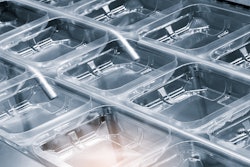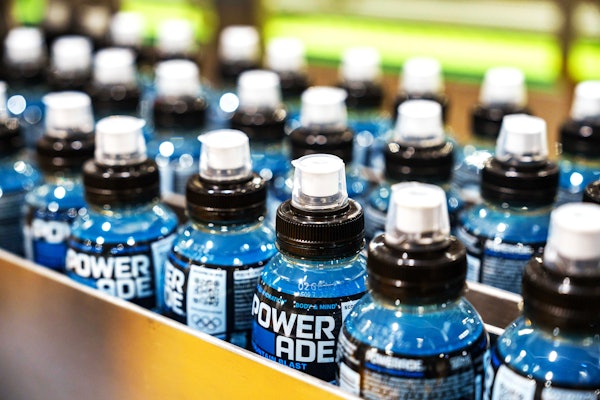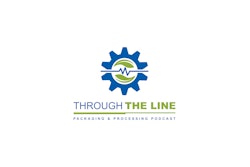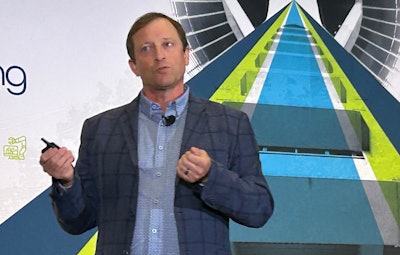
Keynote presentations from Amazon and Microsoft at SPC Impact 2025 in Seattle today offered a rare side-by-side look at how two global tech giants are rethinking packaging with sustainability and scalability in mind. Despite their different business models—one shipping billions of everyday items, the other delivering high-value electronics—their strategies revealed common priorities: eliminate waste, prioritize customer experience, and scale solutions through technology and collaboration.
While Amazon is known for its e-commerce logistics and Microsoft for its devices and cloud services, both companies are transforming packaging into a lever for innovation and climate action. From system-wide shifts in material use to investments in automation and design, their shared approach is rooted in data, operational agility, and a drive to make packaging part of a more circular economy.
Purpose-driven packaging transformation
For Amazon, the focus is on the customer. Patrick Lindner, VP of Mechatronics & Sustainable Packaging, explained that packaging is a critical part of the Amazon experience, one that must deliver on protection, ease of use, and environmental responsibility. “We always put the customer first,” Lindner said. “And for our customers, ease and recyclability matter. If it’s not easy to curbside recycle, it doesn’t deliver a great experience.”
That philosophy translates directly into design and material decisions. “Convenience is at the heart of why people shop with Amazon,” Lindner added. “So we have to make sure our packaging is not just functional and protective, but also intuitive and simple to dispose of.”
At Microsoft, packaging is viewed as an extension of the company’s broader sustainability mission. “Our packaging mission is crafted intentionally to support Microsoft’s company-wide goal of becoming carbon negative, water positive, and zero waste,” said Julian Duffy, general manager of Packaging and Content. “It’s also about elevating our team’s sense of purpose and impact.”
 | Read this related article, “Colgate, Amazon Report ‘History-Making’ Progress with AI for Recycling” |
Duffy emphasized that packaging is more than a logistics or compliance function, it’s part of product development. “We see packaging as product-making,” he explained. “It has to deliver on quality, protection, customer experience, and sustainability. We can’t sacrifice one to achieve the other.”
This sense of responsibility, both speakers noted, is not just institutional, it’s deeply personal. “The energy in this room is inspiring,” Duffy told the audience at SPC. “It’s a reminder of the opportunity and the responsibility we all share.”
Designing out waste, at scale
Amazon’s efforts are anchored in scale and speed. In 2024 alone, the company transitioned two major fulfillment centers—Euclid, Ohio, and Shreveport, La.—to 100% curbside-recyclable, paper-based packaging. That switch helped Amazon eliminate 15 billion plastic air pillows in North America, replacing them with recycled-content paper dunnage.
Amazon also announced that by the end of 2024, plastic packaging made up just one-third of its outbound packaging, down from two-thirds a year prior. “Every single fulfillment center has been touched by this shift,” Lindner said. “At our scale, that’s meaningful progress.”
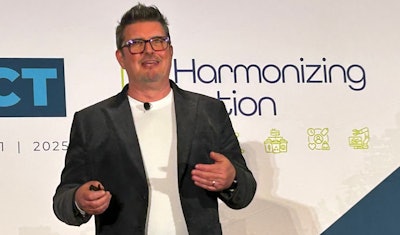 Julian Duffy, General Manager of Packaging and Content, Microsoft
Julian Duffy, General Manager of Packaging and Content, Microsoft
Microsoft, meanwhile, has been working toward two bold targets: eliminating all single-use plastics in packaging by the end of 2025 and making 100% of its packaging recyclable by 2030. The company is already close; its packaging is 94% recyclable today, with 54% post-consumer recycled (PCR) content across its portfolio.
“Every new launch from Microsoft since late 2024 is now single-use plastic free,” said Duffy. “We’re focused on converting legacy packaging in the market next.”
Innovation through automation and AI
Both companies are pushing the boundaries of automation and intelligent systems to support their goals. Amazon has deployed over 120 made-to-fit packaging machines across its network and is scaling a new padded mailer system made entirely of recyclable paper. Lindner highlighted Amazon’s development of proprietary robotics and labeling systems, some using AI to identify the flattest surface on an irregular package at lines speeds of over 3,000 units per hour.
“Our engineers are building tools that didn’t exist before,” Lindner said. “That’s what it takes at our scale.”
Microsoft is using advanced modeling and simulation to replace hard-to-substitute materials like EPS foam. For Xbox packaging, the team developed a virtual testing loop that accelerated the design of a fiber-based cushioning solution under tight timelines. “We were against the clock,” said Duffy. “Simulation let us solve a tough drop-test challenge while staying on track.”
Data as the foundation
Data integrity emerged as a common thread across both presentations. Microsoft has embedded sustainability KPIs into its early design reviews, enabling business leaders to see the environmental impact of packaging choices in real time.
“If we don’t have good data, we can’t make good decisions,” said Duffy. “And in this era of AI, it’s the data that drives agility.”
Lindner also emphasized rigorous customer research as the foundation of Amazon’s packaging strategy. “We don’t rely on anecdotes,” he said. “We conduct extensive studies to understand what our customers value, especially when it comes to curbside recyclability.”
Moving beyond materials
Both companies made clear that the plastics-versus-paper debate is too simplistic. Lindner stressed that Amazon’s packaging decisions are driven by curbside recyclability and customer experience, not by vilifying any one material. “This isn’t plastics versus paper,” he said. “It’s about finding what’s right for the journey and the customer.”
 | Read this related article, “Google Writes, and Shares, the Book on Plastic-Free Packaging” |
Similarly, Microsoft has invested in replacing not just visible plastics like shrink wrap, but less obvious materials like PP lamination films. “Removing plastic created a cascade of other design challenges,” said Duffy. “But it pushed us to think deeper and solve better.”
Collaboration and culture as catalysts
Neither company claimed to have all the answers. But both emphasized the importance of culture, collaboration, and cross-functional buy-in to sustain progress.
“Amazon alone can only do so much,” Lindner told the crowd. “But together, we can make an amazing impact.”
Duffy underscored the power of alignment across Microsoft’s vast organization. “Our job is to make it easy for business leaders to make the right decision,” he said. “If we can give them the ‘and’—more sustainable and more cost-effective—that’s when real momentum builds.”
The road ahead
From paper-based automation to digital simulation and bio-based materials, Amazon and Microsoft are reimagining what packaging can be and proving that real change requires both vision and execution.
As Duffy put it, “We do believe you can have it all, if you’re prepared to address every challenge from every angle.” PW



